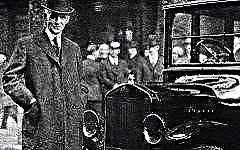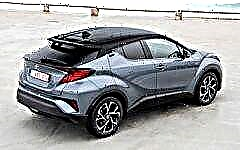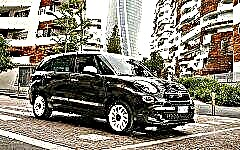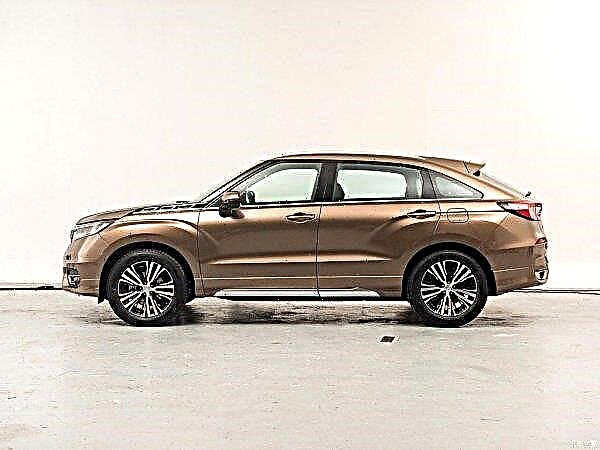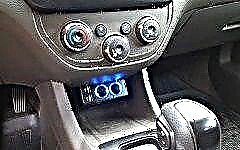
The content of the article:
- Rating of the smallest cars in the world
- Peel P50
- Citroen 2CV
- Daihatsu midget
- Bmw isetta
- Fiat Nuova 500
- Bajaj qute
- Subaru 360
- Renault Twizy Urban
- Fiat 126
- Daewoo damas
Modern cars are becoming more and more perfect every year, even compact models are equipped with engines of unprecedented power. A weak engine has long ceased to attract even those who like to save fuel, which makes such cars more and more rare. Consider the ten smallest cars in history. In our article, we will not dive deep into the times when low power was due to imperfect technologies, our review concerns those cars whose weak performance is due to other reasons.
Rating of the smallest cars in the world
1. Peel P50

The car is the record holder, which got into the Guinness Book of Records as the smallest ever produced.
Despite the unambiguous classification of this vehicle, it is perceived precisely as a motorized carriage, since it accommodates only one passenger and stands on three wheels. The power of the moped engine with a working volume of 0.049 liters is 4.2 hp, which provides acceleration up to 50 km / h. Of course, finding a less powerful vehicle that claims to be a car will be very problematic.
Even though the body is made of plastic, the motor is heavily overloaded and prone to overheating.
The concept of such a transport is extremely simple and borrowed from post-war Germany and Japan, which produced something similar for the impoverished population after the war. But given that the Peel was produced in the 60s, the question arises: for whom was it intended?
2. Citroen 2CV

The legendary French car, which, despite its appearance, found many fans and was quite widespread in its years. In addition, due to the fact that the Citroen 2CV became an icon of retro style, the production of the model continued until 1990.
The popularity among young people was also facilitated by the fact that the car had a removable fabric roof, which made it easy to turn it into a convertible. The base engine had only 9 HP and a top speed of 60 km / h. Thanks to the high ground clearance of 19 centimeters and the location of the engine at the rear above the driving axle, it was possible to achieve good cross-country performance. Formally, the car was four-seater, which was determined by a very narrow body, but the inseparable sofas in front and in the back made it possible, if necessary, to accommodate more.
3. Daihatsu Midget

Who said that only cars of the past can be low-powered? Daihatsu completely refutes this stereotype by releasing a compact Midget truck equipped with a 10 hp engine. Initially, the model had three wheels and competed only with delivery scooters. But in 1996, the second generation appeared, which received the traditional four-wheel platform, which allowed it to be classified as a full-fledged car.
The cabin has a capacity of 2 people, including the driver. Despite this, as a transmission offered a choice of four-speed "mechanics" and even a three-speed "automatic", which is not bad at all for larger models.
Of course, the size of the cargo compartment and the permissible weight of the transported cargo are puzzling, but given the specifics of its operation as a delivery van in tight city streets, the target audience of the model becomes clear.
4. BMW Isetta

How not to recall in our rating the legendary Isetta, which, despite its Bavarian roots, which is now considered the guarantor of high speeds and power, was equipped with a 13 hp motor?
A two-seater car with a rear-engined layout amazed others. Entry and exit from the passenger compartment was carried out through a single door in the frontal part of the car.
This required making the steering gear with a gimbal that allows it to swing with the door. This solution made it possible to achieve incredible fit comfort with such a compact size.
As for safety, it was a weak point of the model, especially considering the fact that the maximum speed reached 85 km / h.
The car is four-wheeled, but this did not prevent him from having rather mediocre stability, which is due to the high height, as well as the fact that the rear track is significantly narrower than the front one.
5. Fiat Nuova 500

It is impossible not to mention this Italian little car, which served as a prototype for the first Zaporozhets model.
Initially, it was equipped with a 13-horsepower engine, but later versions acquired 24 and then 29 hp engines.
The car did not have the most successful layout with the rear placement of a compact two-cylinder air-cooled engine, and the rear sofa was designed for only two passengers, and most likely children.
The model was designed as a cheap vehicle for the whole family. The key task facing the designers was to make it a full-fledged car. That is why, thanks to constant modernization, it acquired modern trim elements, sliding windows gave way to traditional lifting mechanisms, and switches that were responsible for the operation of electrical equipment appeared on the steering column.
Another sign of a full-fledged car was a monocoque body, although at that time it was not difficult to find a budget model on a space frame.
6. Bajaj Qute

Let's continue our rating with a new product that has recently appeared on the Russian market. This Indian little car with a plastic body immediately attracted public attention, because based on its technical characteristics, the country of origin and modest equipment, a fantastically low price was assumed. But the announced cost, which is close to the basic versions of cheap domestic models, put an end to the prospects of Bajaj Qute.
According to some classification criteria, this is an ATV, but if we take into account the fact that this is a five-door vehicle, which requires category B rights to drive, then it can be classified as a compact class car.
Four adult passengers will be accommodated in a compact cabin with relative comfort, although one cannot count on proper safety. The main feature of this model is the rear-engine layout, which allows the domestic motorist to recall ZAZ cars or S3D motorized carriages - they can still be found on public roads.
The engine power of the car is only 13.5 hp, and the working volume is 0.217 liters. It remains a mystery how such a weak unit can move a car with four passengers, and even accelerate to 70 km / h.
7. Subaru 360

The car comes from Japan in the mid-50s of the last century - a poor country with a growing industry. Citizens could not afford full-fledged cars, and it was very expensive to maintain them, so various hybrids of sidecars were in good demand.
As for the Subaru 360, this is a full-fledged car, a classmate of the legendary "humpback" Zaporozhets.
However, if you look at its dimensions, you can see that the Japanese is 335 mm. shorter and as much as 325 kg. easier. At the same time, even in the second row, two adult passengers could be accommodated.
The tiny car was aggregated by a four-speed gearbox, the lever of which was solidly placed on the floor, at the top of the central tunnel.
A useful device for a two-stroke motor was an automatic mixer, which independently prepared a mixture of gasoline and oil in certain proportions, poured into different tanks.
The steering is very light due to the short wheelbase, and the brakes are quite effective. Since the air-cooled engine required a large number of air vents in the engine compartment, the battery was moved to the trunk, which was already fully occupied by the spare wheel and jack.
8. Renault Twizy Urban

The era of the combustion engine is coming to an end, and the series production of electric vehicles is an omen of this. And if Tesla managed to create a full-fledged vehicle, then the Renault Twizy is more of an electric ATV, designed to drive as long as possible on a single battery charge, sacrificing comfort and spaciousness.
The car is two-seater, but the passengers are accommodated in tandem: one after the other, and the cheapest versions of the model still do not have doors. There is very little rear space, so the landing formula can be safely defined as 1 + 1.
At the same time, against the background of other participants in our rating, the engine power is not so small and amounts to 17 hp, and the maximum speed is 81 km / h. Considering the range of 100 kilometers, the figures are not at all impressive.
This model is not at all perceived as a full-fledged car, but rather an experimental chassis on which technologies will be improved. The Twizy is even more of a motorcycle adapted for short-distance riding in the cold season.
9. Fiat 126

If we turn to the consideration of more modern models of full-fledged cars, then another long-liver, equipped with a 26 hp motor, is the Fiat 126.
The first copy of the model rolled off the assembly line in 1972, and the last in 2000, while the total circulation exceeded 4.5 million copies.
The car was rightfully considered a five-seater, although it did not spoil the comfort and spaciousness of the rear passengers. Despite the low power of the two-cylinder base motor, the car pleased the driver with good handling thanks to the front-wheel drive and short wheelbase.
Of course, the maximum speed of 105 km / h, even in those years, was not taken seriously by anyone, but the value of the model was different - it was a full-fledged car without signs of extreme economy or the devil of a motorized carriage.
The weak point of the car was its low corrosion resistance, which literally took it out of service in just a few years. This was especially true of the specimens collected in Poland. There was even a joke about how to get rid of an obsolete car by watering it with rust remover.
10. Daewoo Damas

Another unusual participant in our rating, which has a 38 hp engine, which is not so little for an A-class car, but this model is a minivan, and even stylized as a minibus of the mid-nineties. Moreover, the rear suspension was based on springs, which implied the transportation of serious loads, and for these purposes the motor is clearly weak.
The official number of seats is 7, which, given the size, seems like a fantastic value. The height of the ceiling is intended to somehow add space, which in this case is determined not by a comfortable fit, but by the need to squeeze through the cabin to its seat. But the maximum speed of 114 km / h looks quite acceptable for a car of this class. The small width and low lateral stability make the car prone to overturning during sharp maneuvers, so a weak engine is more of a precaution.
Damas, like any early Korean, is based on a foreign platform, in this case the Japanese Suzuki, which predetermined its compact size.
Conclusion
The list we have given includes both rarities that have long migrated to the museum, and relatively fresh models that can still be found on the streets. There are also new items, as well as advanced electric vehicles, which have yet to take their place in the market. This suggests that low-power cars have not left the scene at all, since their compactness, low price and economy will still play a role.

